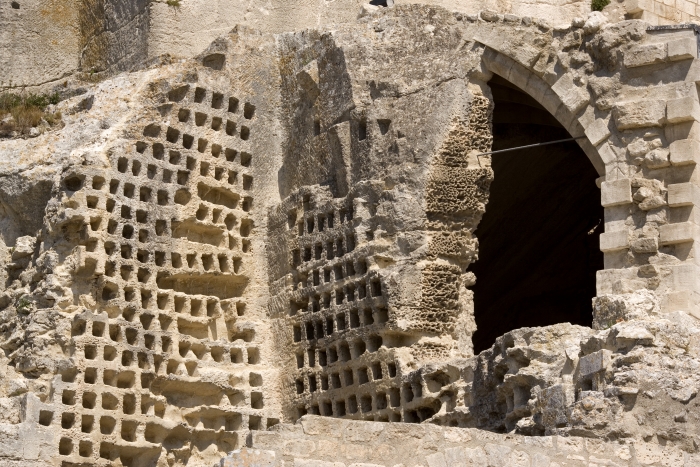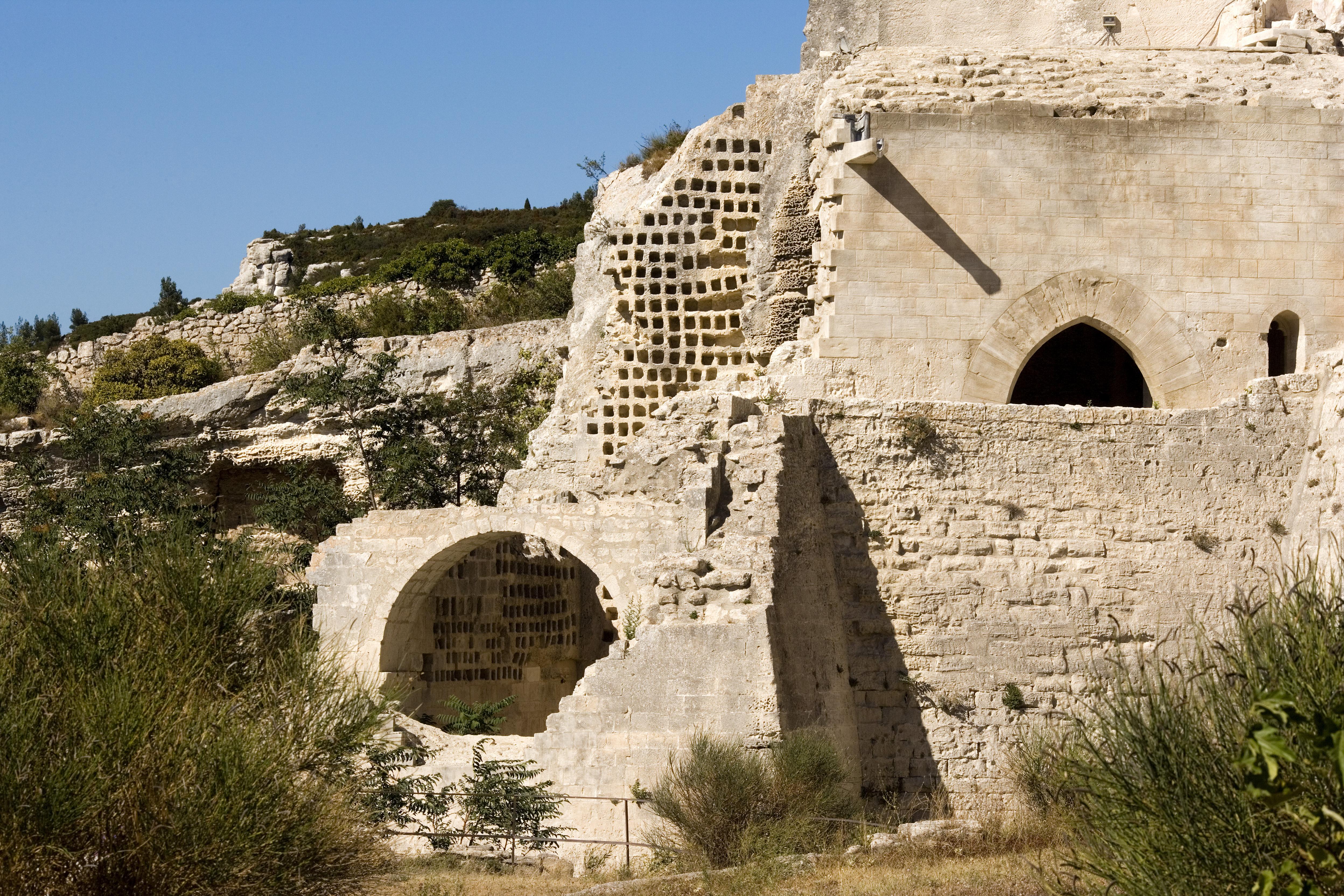The Dovecote
Why is this place so important ?
The dovecote in the Castle of Les Baux is an impressive reminder of the practice of pigeon breeding, which was very common in the Middle Ages.
Pigeon breeding developed in the Middle Ages. As meat was a luxury, there was a very real need to introduce dietary variety. At the Castle of Les Baux, the tall building that housed the dovecote was contemporaneous with the keep.
Throughout the feudal period, the lay and ecclesiastical lords were practically the only individuals authorised to construct and exploit huge dovecotes, some of which contained up to 2,000 nest holes. This feudal privilege was abolished during the Revolution.
In detail
 The pigeon nest holes cut directly into the rock face are called ‘boulins’. The eggs and young pigeons were removed by means of a ladder. Each nest hole was designed to house a couple of birds.
The pigeon nest holes cut directly into the rock face are called ‘boulins’. The eggs and young pigeons were removed by means of a ladder. Each nest hole was designed to house a couple of birds.
Did you know?
The pigeons, which were much sought after for their meat, were also used as messengers, a tradition that dates back to antiquity. In fact, the homing pigeon belongs to a specific pigeon race whose instinct is highly developed, and is capable of returning to the initial dovecote from any departure point.
